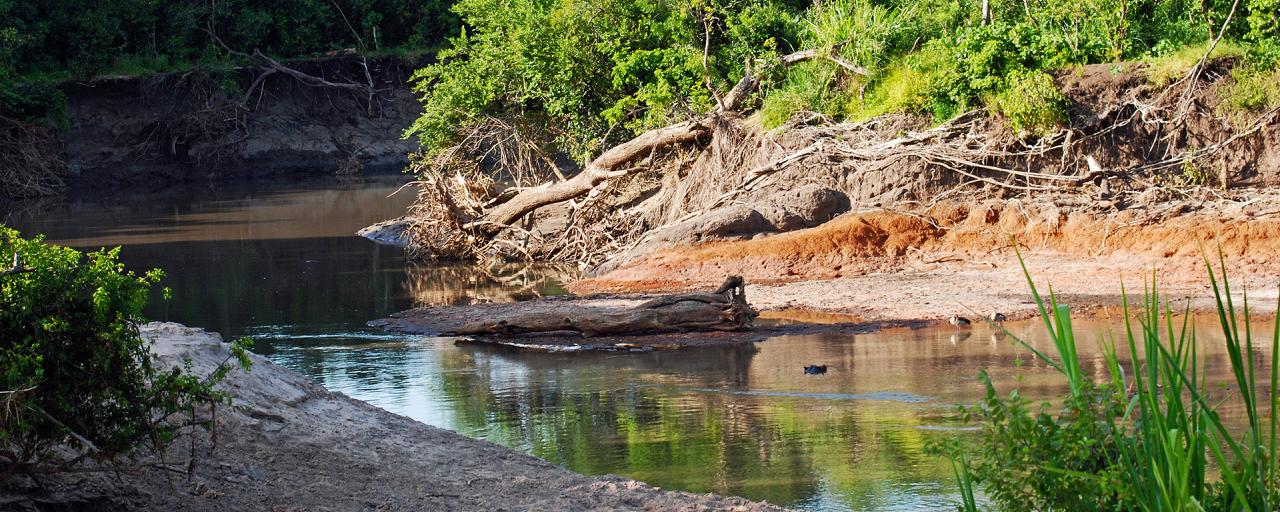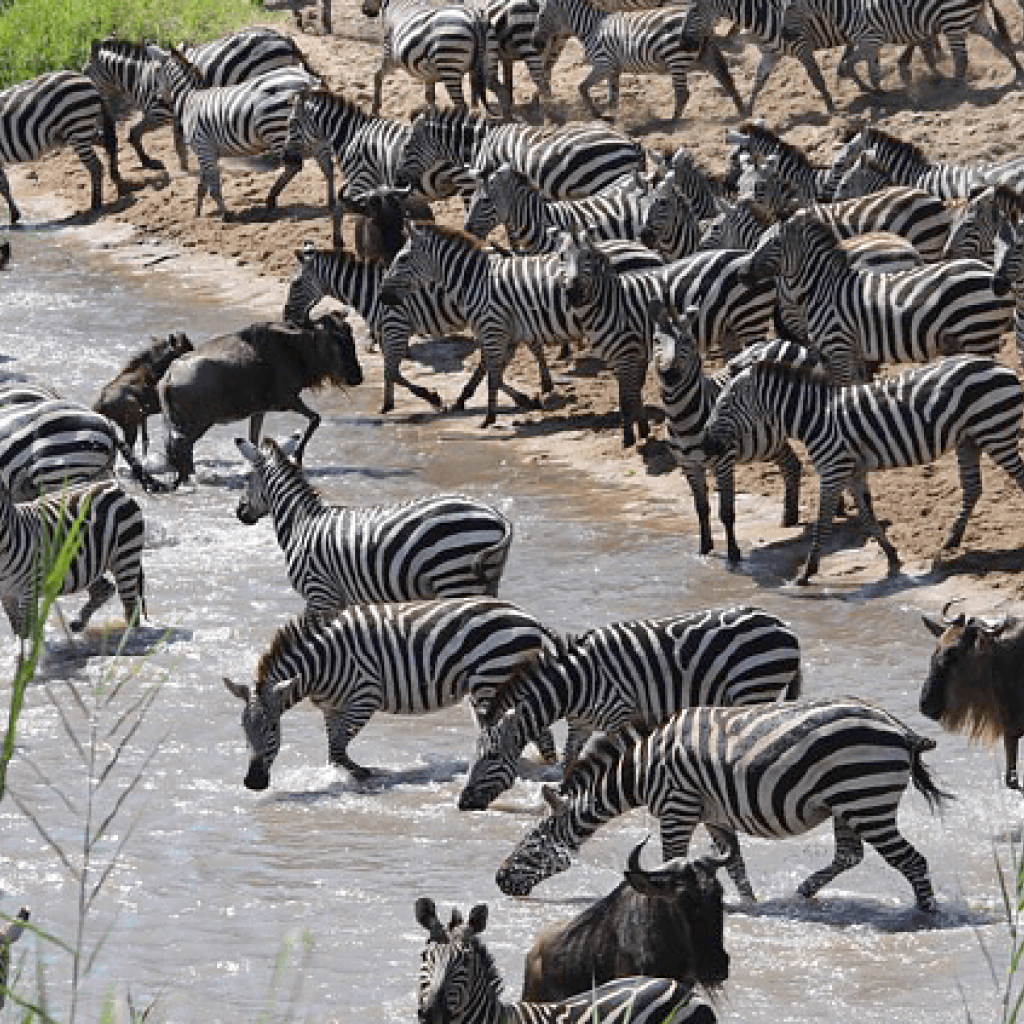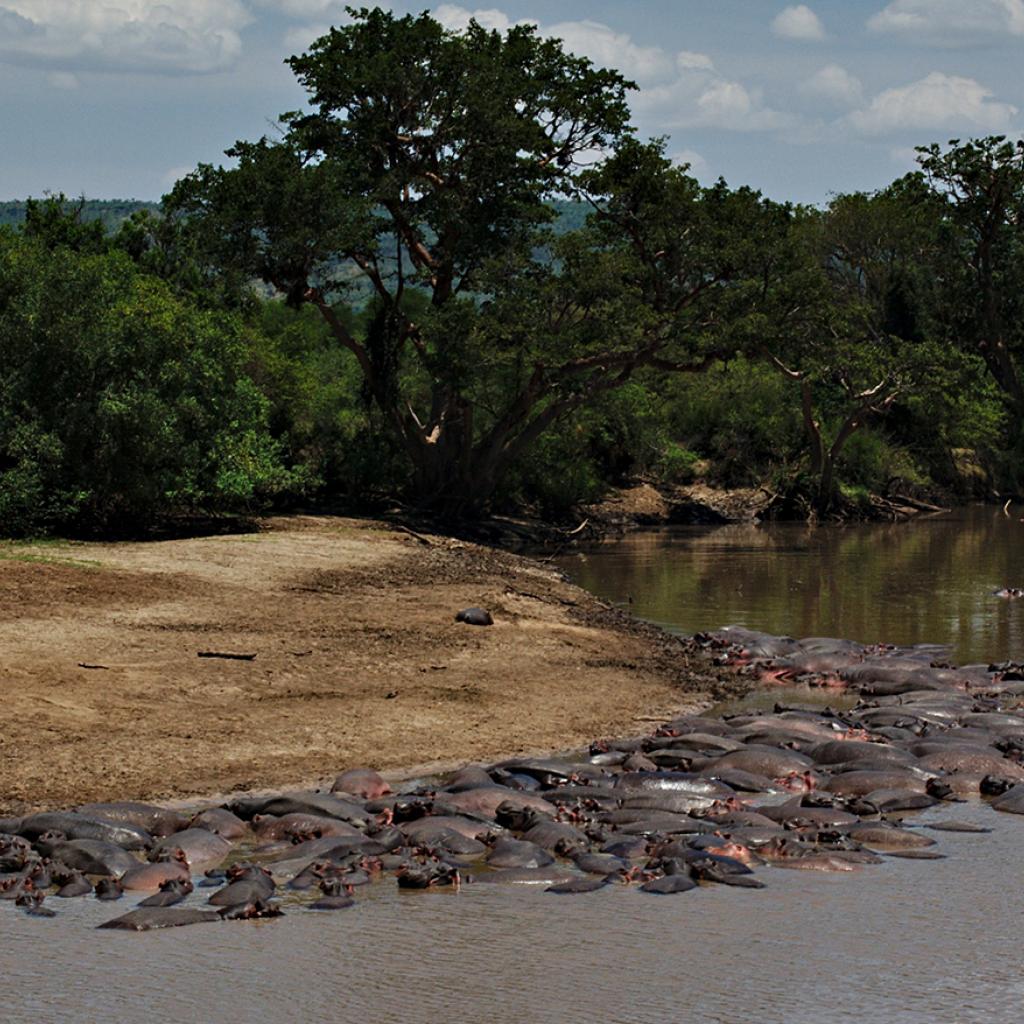Western Serengeti is commonly called “Western Corridor” and it consists of a 50 km wide strip of land along the course of the Grumeti River, starting from the Seronera area to almost reach Lake Victoria.
The Western Corridor is made up of a large valley expanding from East to West and at whose base flows the Grumeti River. It is lined on both sides by hills. The Grumeti is a perennial river and on its shores there is always a forest dividing the territory into two parts.
South of Grumeti River and the Simiti Hills, still from East to West, flows the Mbalageti River.
The Western Corridor area offers unique animal sighting opportunities during the Migration, from May to July, and also the possibility to admire the landscape. The latter includes rivers, valleys, hills and alluvial plains. These sceneries are definitely different from the ones found in the Southern Serengeti plains.
Few visitors travel this far out: tracks are not in the best conditions and communications are harder. However, the effort is paid back with unmatched landscapes and great sightings, especially in the Migration period.
Travelling westwards from Seronera, in Central Serengeti, through a shrubby zone, the landscape is not the best, but it is possible to spot impalas, bat-eared foxes, striped mongooses, elands, hartebeests, hippos, black and white colobuses, dik-diks, giraffes, lions and other mammals. However, animal life here is not as high in concentration as to make this part of the Park unmissable.
This is an ideal area for birds of prey like bateleurs, long-crested eagles and goshawks.
Long columns of wildebeests and zebras come here from the South to crowd on the southern shore of the River. Herds have to face the risk of crossing the Grumeti, infested by Nile crocodiles. This River comes between them and the destination of their long journey.
The Western Corridor is characterized by different habitats: grassy plains, forests of Acacias, hills, marshes, and gallery forests by the shores of the Grumeti.
Here, it is possible to experience great sightings all year round. Some herds of wildebeests and zebras do not join the migration and just reside here all the time. Moreover, the same area is home to elephants, giraffes, buffalos, leopards, elands, topi antelopes, hartebeests, impalas, waterbucks, Thomson gazelles and even big cats and hyenas.
The huge Nile crocodiles gain the spotlight though, as they crowd the Grumeti waters, especially the Kirawara segment, where the water never dries. Other inhabitants of this River are the hippos and several species of birds.
From here, even more to the North, starts the Grumeti Reserve, where the Migration passes in the months of June or July in its journey to the North to reach the Maasai Mara.
The areas of Western Serengeti
- South of the Grumeti River
- North of the Grumeti River




